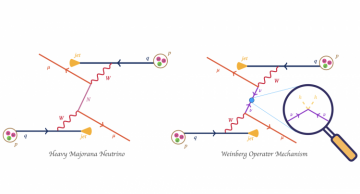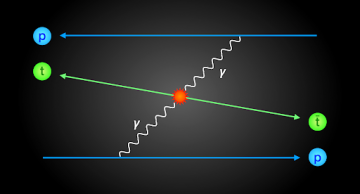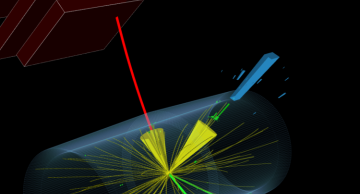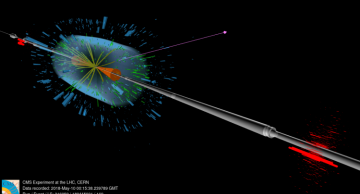The biggest achievement of the LHC so far has been the observation of a Higgs boson in 2012. This is an outstanding confirmation of what today is the established theory that describes the fundamental interactions of particles, known as the standard…
News
|
mazumdar |
Physics
“The important thing”, said Einstein, “is not to stop questioning”, and we, as humans, never have. What is it all made up of? How does it fit together? We’ve been yearning to answer these questions for aeons, with our collective efforts culminating…
|
mazumdar |
Physics
It has been almost a decade since the Higgs boson (H) was discovered by the LHC experiments, ATLAS and CMS. However, the enthusiasm to study this particle in detail is never ebbing. The H is being scrutinised vigourously in many more ways than the…
|
mazumdar |
Physics
Neutrinos (𝝂) are the most intriguing particles in nature. The evolution in our understanding about the characteristics of the neutrinos is also very interesting. The apparent non-conservation of energy in beta decay led Pauli to predict, in 1933, a…
|
mazumdar |
Physics
Ask someone what experiments at the CERN-LHC do, they will tell you: ‘You accelerate two protons to very high energy, smash them together and look in great detail at all particles created from the disintegration of the protons.’ etcetera. Well… yes…
|
fblekman |
Physics
Press Statement
The CMS collaboration has substantially improved the precision with which the top quark mass is measured. The latest result, a measurement of the top quark mass of 171.77 ± 0.38 GeV, was presented at CERN last week and estimates the…
|
mazumdar |
Physics
The quantum theory of electromagnetic interaction, called quantum electrodynamics (QED), is the most accurate and successful mathematical description of a large variety of natural phenomena. In numerous experiments over last many decades it has been…
|
mazumdar |
Physics
Tau leptons are the heavy siblings of muons and electrons, being respectively 170 and 3500 times more massive. Leptons are not sensitive to strong interaction. The tau leptons are however so massive (about 1.8 times heavier than the proton) that…
|
fblekman |
Physics
CMS casts a wide net in the hunt for undiscovered particles
Physicists at the CMS experiment have been searching for new particles in exciting new places. In a recently published paper, they explore the possibility that the Large Hadron Collider (…
|
mazumdar |
Physics
One of the intriguing questions in particle physics is the origin of mass of the fundamental particles. The question we ask is: is the Higgs boson responsible for the masses of all the known particles? The well-established theory of particle physics…
|
mazumdar |
Physics
One of the fundamental puzzles we face today is the dark matter (the dunkle materie, as called by the Swiss physicist Fritz Zwicky back in 1933) in the universe. It is highly abundant (almost five times more than all the objects put together…
|
mazumdar |
Physics
The word lepton comes from the Greek λεπτός (leptós,) meaning “small”; the electrically charged leptons (electrons, muons, and taus) have much smaller masses than their counterparts in the quark sector. For example, the tau particle is the…












